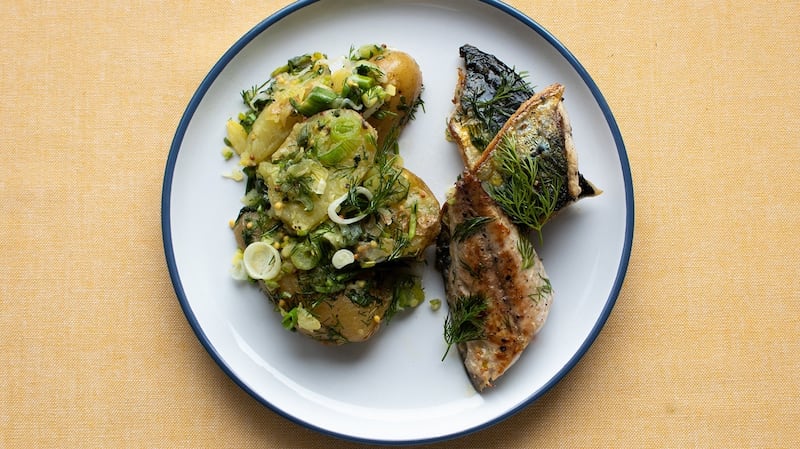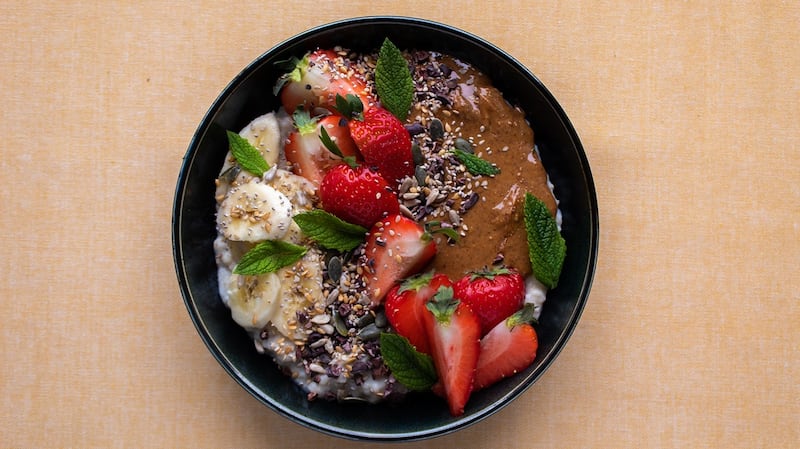It sometimes seems that we students try our best to isolate and destroy as many brain cells as possible during the three or four years of showing up to lectures and rushing through assignments.
College timetables can be rough – social events come up sporadically, study beckons, then screeches. You’re not as likely to be around for dinner or even lunch every day so it’s harder to plan meals or even do a simple food shop.
College might seem like a free pass before having to slot yourself into adulthood. But, as annoying as it sounds, it’s important to get a varied diet that is rich in different nutrients. You could go on a rag-week bender but as long as you make sure you’re eating some form of colourful vegetables, you’ll be grand – our college bodies are pretty resilient.
You’ll have to cater for your immune system, which is constantly under fire, especially if you live in student accommodation, which can sometimes resemble a war zone.
Ace vitamins
Your brain is powered by carbohydrates in the form of glucose, which is basically the energy fuel of the body. Protein makes and repairs the cells in the body while fat protects the internal organs and insulates the body. The basic vitamins that look after your immune system are vitamins A, C and E, or ‘Ace’ vitamins.
Certain vitamins and minerals get together to help absorption in the body. Vitamin C helps in iron absorption, vitamin D helps calcium be absorbed.
Your body cannot make omega 3 or omega 6, what are called essential fatty acids, so you need to obtain these from your diet. Omega 6 is easily obtained and most of us eat enough of it. Oily fish like mackerel, trout and salmon are good sources of omega 3.
As well as helping brain health, omega 3 can help heart and bone health. The recommended amount is two portions of oily fish a week. If you’re not a fan of fish, you can eat dark leafy greens like kale, and chia seeds or soya beans, for example. Omega 3 is a magical ingredient to improve brainpower.
Eating fresh foods will also leave you feeling more energetic, a juxtaposition as in college cooking a varied, vegetable-heavy meal can be hard when you’re behind on an assignment (can you ever be on top of an assignment, if so reader, do tell your secret?).
Glycemic index
Eating the right nutrients can make a big difference to your studying. Take the glycemic index, which categorises foods into high and low glycemic foods. High glycemic foods will give you a burst of energy then a drop, which will leave you feeling sluggish.
These foods include white carbohydrates, sugars, etc, while low glycemic foods give a more sustained release of energy into the bloodstream with no drop in energy levels. Low glycemic foods include wholegrains, nuts, most fruits and vegetables.
If you have an imminent deadline or exam, it’s hard to justify the time spent cooking a meal. Even making scrambled eggs on wholegrain toast, with a handful of spinach chucked in, will do some good and it only takes about five or 10 minutes to prepare.
Steps you can take
A handy way of getting more greens into your diet is to add them into any meal that you can – mix a bag of spinach into a curry, add some sautéed kale to your pasta, go mad and make a salad out of some greens, like broccoli.
The same goes for fruit – chuck fruit on all of your breakfasts and bring a banana or apple to college.
The carrot salad has all of the Ace vitamins– vitamin A from carrots, vitamin C from lemon juice and chilli and vitamin E from peanuts. Because vitamin A is a fat-soluble vitamin, the olive oil helps it to absorb into the body.
The potato salad with mackerel is a lot fresher than a regular one – it doesn’t use mayonnaise but a sharp vinaigrette and a bunch of herbs to lighten it up. The mackerel contains a lot of omega 3 and is an easily digestible form of protein.
I’ve been through a lot of phases with porridge over the years. I used to have a housemate that would just eat plain porridge, nothing added, to get the most out of it. I get that but that’s not my vibe and I need to trick myself into eating porridge by putting almond butter and some fruit on it. I’m getting a few more nutrients in there and the taste is vastly improved.
CARROT, CHILLI AND PEANUT SALAD

Ingredients
3 carrots, peeled
A small bunch of coriander, roughly chopped
Juice of half a lemon
2tbsp extra virgin olive oil
1tbsp roasted peanuts
1 red chilli, finely sliced
Salt and pepper
Method
Grate the carrots on a coarse box grater. Add the rest of the ingredients and season with salt and pepper. Serve in a large bowl or pack portions into lunchboxes and store in the fridge.
PAN-FRIED MACKEREL WITH HERBY POTATO SALAD

Ingredients
2 mackerel fillets, trimmed and cut in half lengthways
500g baby potatoes
Small bunch of dill
Small bunch of parsley
1 bunch of spring onions
2tbsp extra virgin olive oil
1tbsp cider vinegar or white wine vinegar
Salt and black pepper
Method
Wash the potatoes and place in a pot. Fill with cold water and add a tablespoon of salt. Bring to the boil and cook for eight-10 minutes. Drain off most of the water and allow the potatoes to steam until tender – check with a knife, there should be no resistance.
Drain the potatoes completely. Cut them in half and transfer to a large bowl.
While the potatoes are still warm, add the olive oil, vinegar, more salt and black pepper.
Chop the herbs roughly and slice the spring onions finely and add them to the potatoes. Give it a taste and see if it needs more seasoning or vinegar.
Put a frying pan on medium-high heat and when it’s hot, add a tablespoon of oil. Season the mackerel with salt and pepper on both sides. Lay the fish skin-side down and cook on each side for two-three minutes until golden brown.
Serve the mackerel with the potato salad on the side.
PORRIDGE

I’ve been trying to figure out how to fit making porridge into a busy schedule, which isn’t easy but if you have some extra time in the mornings, it’s worth getting some porridge on the go.
The key to not spending precious morning time on porridge is soaking the oats. This can be done in two ways.
The first depends on if you have your life together and remember to soak the oats in cold water the night before. You can even make a big batch so you don’t have to do it every night, making enough for three or four days.
The second is for when you’ve forgotten to soak your oats, which is me every morning – boil some water in the kettle and cover the oats with hot water. Then go off and have your shower and then come back and cook the porridge.
For one portion
Half a cup of oats, soaked in water
Half a cup of milk
1tbsp almond butter
1tsp honey
A mixture of seeds: pumpkin, chia, sunflower, flaxseed
Fresh fruit: sliced apple, berries, bananas
Method
Heat the oats with the milk on medium-low heat. Let the porridge simmer, stirring often for about two-three minutes until thick and creamy. You may need to add more liquid if it becomes too dry.
Pour the porridge into a bowl and add your toppings.
Eat in a rushed fashion while you look at your phone, trying to cram in five minutes of Instagram before college.













